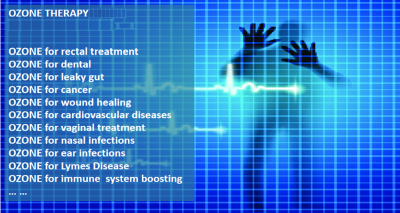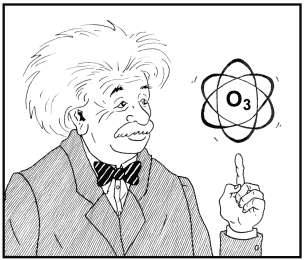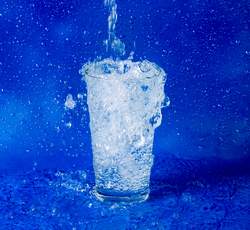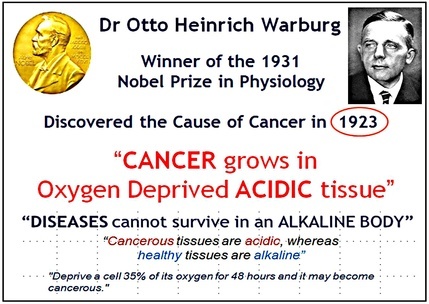The heart is a muscle that pumps oxygen-rich blood to
all parts of the body. When you have heart failure, the
heart is not able to pump as well as it should, according
to Rasmusson.
When this happens, blood and fluid may back up into the
lungs (congestive heart failure), and some parts of the
body don’t get enough
oxygen-rich blood to work normally. These
problems lead to the symptoms of heart failure, Rasmusson
says.

One of the many important
jobs of your blood is to deliver oxygen throughout
your body. But when you have heart issues, your heart
muscle might be weaker and may not pump blood the way
it normally would. That
means your body doesn’t get the oxygen it needs.
Blood oxygen levels may determine cardiac muscle
regeneration

Restricted Blood Flow
"Over many years, fatty material and cholesterol
(plaque) can stick to the walls of the arteries, including
the blood vessels of the heart (coronary arteries). This
disease process is called atherosclerosis.
When blockages develop in the coronary arteries, the
restricted blood flow results in a lack of oxygen to
the heart muscle. This condition is
known as coronary artery disease. Insufficient blood
flow to the heart muscle can lead to symptoms of chest
pain (angina). If the coronary artery becomes completely
blocked, it will cause a heart attack. During a heart
attack, some of the heart muscle can die from a
lack of oxygen."
Gradual heart damage
Coronary artery disease causes gradual heart damage over
time. Ischemia is the medical
term for what happens when your heart muscle doesn't get
enough oxygen. Ischemia may happen only
once in a while, such as when you are exercising and your
heart muscle needs more oxygen than it normally does. Ischemia
can also be ongoing (chronic) if your coronary arteries
are so narrowed that they limit blood flow to your heart
all the time. This chronic
lack of oxygen can gradually damage portions of your heart
muscle. Your heart can slowly lose its
ability to pump blood to your body.
Chronic ischemia can allow
your heart muscle to get just enough oxygen to stay
alive but not enough oxygen to work normally.
Ongoing poor blood flow to the heart muscle reduces
the heart's ability to contract and causes it to pump
less blood
during each beat.

Heart failure affects nearly 6 million Americans. Roughly
670,000 people are diagnosed with heart failure each year.
It is the leading cause of hospitalization in people older
than 65.
Heart failure does not mean the heart has stopped working.
Rather, the heart’s pumping power is weaker than
normal. Blood moves through the heart and body at a slower
rate and pressure in the heart increases. As
a result, the heart cannot pump enough oxygen and nutrients to meet
the body's needs.
"It’s important
to understand how oxygen affects the heart. When
the heart doesn’t receive enough oxygen, ischemia
or angina can occur. Myocardial ischemia occurs when
blood flow to the heart is reduced, which
prevents it from receiving enough oxygen. However,
myocardial ischemia is usually the result of a partial
or complete blockage in the heart’s arteries
and not from having a chronic lung disease. The most
common symptom of myocardial ischemia is chest pressure
and pain.

Angina is a term used for chest pain caused by reduced
blood flow to the heart muscle, and it’s a symptom
of coronary artery disease. The symptoms of angina include
chest pain, shortness of breath, nausea, sweating dizziness
and fatigue. The chest pain or discomfort associated with
angina is usually described as pressure, squeezing, fullness
or pain in the center of the chest."
What is Your Blood Oxygen
Level?
In the most basic terms, your
blood oxygen level is the amount of oxygen in your
blood. As you can imagine, the
level of your blood oxygen is important for your heart
health. If your blood oxygen is too low—in
comparison to the average blood oxygen level of a healthy
adult—you may need to do something about it,
A normal blood oxygen level typically ranges from
75 to 100 mm Hg. In the case of dangerously low blood
oxygen, the level that requires supplemental oxygen
is anything under 60.

The best way to monitor blood oxygen levels is
through your arterial blood gasses (ABGs); however,
this can be difficult to do at home. In place of
using an ABG test, it’s more convenient to
use a pulse oximeter, which measures oxygen saturation
through a small clip on your finger. In the realm
of oxygen saturation levels, normal is often considered
anything between 95-100 percent. Are
my Blood Oxygen levels normal ?
Anything below 90 is usually considered low, therefore
if you are below this level, you should consider
drinking ozozonated water,or talking with your
health care giver
|
Why ?
Because oxygen is essential
to every function of the body, making
sure your body receives enough oxygen and can pump
that oxygen-rich blood to the right places is also
important. Your blood
oxygen level is one of the most important levels to
measure; as
it is a clear indicator of how well your body is distributing
oxygen . Taking the time to determine
your blood oxygen level and how it fits in with the
national average can be a vital marker for the direction
of your health...Are
my Blood Oxygen levels normal ?

"What Does My Blood
Oxygen Level Mean for My Health?
Your blood oxygen levels have a direct effect on the expression
of your symptoms. A low blood oxygen level can signify
a lack of proper circulation or oxygen saturation within
the body, which can ultimately result in a variety of conditions
typically associated with chronic lung disease."
These may include:
Confusion
Restlessness
Headaches
Shortness of breath
Rapid breathing
Dizziness, lightheartedness and/or fainting spells
Lack of coordination
Rapid heart rate
Elevated blood pressure
Visual disturbances
Bluish tint to lips, earlobes and/or nail beds
Elevated red blood cell count"

Oxygenating your Blood
You might want to consider ozonated water,
Using ozonated water is a great way to bolster your health
and start leading a healthier life. Ozone is an extremely
powerful form of oxygen that is among the best oxidizers
around, which is why you might want to consider implementing
this water into your diet.
| If you decide to drink Ozonated water, you’ll
also find that it’s free from Viruses, parasites,
bacteria, and fungus. All of these impurities are removed
when you ozonat your drinking water |
Ozone is Oxygen. We breath in O2 oxygen from the air around
us. Ozone is O3, so it has an extra electron looking to
pair itself. This unstable electron is what makes ozone
a wonderful Cleanser. When we have a Lightening storm Ozone
is created in the atmosphere and Hydrogen peroxide (H202)
is created in the water. They both will return O2 and H20
and at the same time Cleanse the the earth.

"Many scientists were stunned recently when it was
revealed that air bubbles trapped in fossilized amber had
been analyzed and found to contain oxygen levels of 38%.
Yet today it is well known that the average oxygen content
of air is only about 19%. In other words, since the early
history of the earth, it appears there has been an estimated
50% drop in the average oxygen content of air we breathe!" Is
that one off the reasons for the high rates of Heart Di-ease?

Dr Otto Warburg, twice Nobel Laureate, is credited with
proving that cancer cells cannot thrive in an oxygenated
environment. “Cancer, above all diseases, has countless
secondary causes, but there is only one prime cause: anaerobic
respiration”.
In other words, lack of oxygen in the body at cellular
level makes it more conducive for cancer cells to grow.
Dr Warburg stated that when there is insufficient oxygen
for normal aerobic respiration, cells go into “fermentation
mode”. Cells grow out of control, becoming cancerous.
Further research proved that this can be reversed by saturating
the cells with oxygen Is
that one off the reasons for the high rates of Cancer?
Ozone is one of the most energetic and useful agents known
to science. Its therapeutic
action is due to oxygenation of the blood by
the loose molecule (free radical) of oxygen in the O3 compound.
It is carried to the various organs and tissues of the
body and absorbed, thus oxidizing the waste products, and
facilitating their elimination. In other words, ozone increases
the metabolism without the expenditure of vital energy
and special stress should be laid on the fact that ozone
is a NATURAL remedy.
Dr. William Turska
| "The under oxidized and subnormal temperature
person will present one of more of the following
symptoms: headache, dizziness, insomnia, constipation,
faint-feeling, loss of appetite, palpitation of the
heart, liver and kidney problems, menstrual problems,
cold hands and feet, anemia, gastrointestinal problems,
chlorosis, etc., all of which are due to an impoverished
blood supply. " |
"Ozone activates both monocytes and
lymphocytes. It increases
the oxygen supply to the heart and the brain.
It improves oxygenation and metabolism (by accelerating
the Citric Acid Cycle which is the main cycle for the liberation
of energy from sugars). In Russia and Cuba, ozonated water
is used to treat many types of intestinal & gynecological
problems including ulcerative colitis, duodenal ulcers,
gastritis, diarrhea, and vulvovaginitis. Ozone also changes
the electrical charge of blood cell membranes so that they
won't clump together (which decreases their ability to
absorb oxygen and release it to tissues)."


Ozone effects on Specific Bacteria, VIRUSES
and Molds
Ozone is not a drug and it is not a magic
bullet. It is a therapeutic tool of great power which can
aid the body in regaining health. However, in the end,
it is the immune system that has to do the work of healing
the body. Therefore,
the immune system must be functioning.
The immune system is controlled by the midbrain, the limbic
system, through the thymus. The limbic system also controls
the emotions. If the emotions are disrupted, the immune
system is suppressed or shut down.
Recent research by Dr. Glen Rein of the Heartmath Institute has shown that
the thymus, the general of the army of the immune system, is regulated by sympathetic
resonance with the heartbeat. By measuring the regularity of the hearbeat with
an electrocardiogram, Dr. Rein was able to show that irregular heartbeat, as
caused by emotional upset, produced erratic thymus function, which suppressed
the immune system. Dr. Rein also found that it was possible to train people
to control their heartbeat and raise their level of immune function.

Since ozone has a well-known calming and analgesic effect, perhaps ozone
therapy causing restoration of heartbeat regularity has a role to play
in enhancing
the immune system, along with interleukin-2 stimulation. Ozone
is already used as a treatment for heart arhythmia. Therefore,
prolonged use of ozone would enhance the immune system by contributing to a
calm, even heartbeat, produced by a well-oxygenated heart pumping clean bright
red blood through plaque-free arteries.
In addition, oxidized toxins are sweated out through the skin, rather than
dumped to the liver, which is important in preventing toxic shock in patients
whose liver function is poor. Exercise is also an important adjunct to ozone
therapy, and is not to be overlooked. The lymph system contains 90% of the
water in the body and must be cleaned. Since the lymph system has no pump
like the heart, the lymph tends to become toxified and sluggish. The use
of a rebounder
followed by the steam cabinet will go a long way towards cleaning the lymph.
THE CAUSE AND PREVENTION OF CANCER - Saul Pressman
"Ozone is useful in
ischemic heart disease, angina, myocardial infection
and ischemic arrhythmia, and cardiomyopathy.
Ozone helps to eliminate any drugs, alcohol or environmental
toxins that may contribute to heart or vascular disease.
It has produced dramatic improvements in peripheral
vascular disease, and relieved claudication, ischemic
cramps and ischemic ulcers. "
Dr. George Freibott, ND, MD

Oxygen plays a vital role in maintaining
health in the body. Oxygen and sugar are the primary nutrients
that each cell requires to generate energy for all its
life functions. These functions include the transport of
molecules, synthesis of all chemical compounds and mechanical
work such as muscle contraction. Thousands of these reactions
are occuring at all times. These reactions are what allow
the heart to pump blood, the immune system to fight infection,
the gastrointestinal tract to digest food, and the nervous
system to process information.
| While using ozone therapy one should supplement with
Either vit c,vit E, N-Acetyl-Cysteine, and Selenium
in order to support the glutathione detoxification
system. |
Oxygen is also an important structural component
of the organic compounds used by the body as essential
nutrients, such as vitamins and fatty acids. Oxygen
also has an important role in removing waste products from the system. As
people age, their bodies extract oxygen and transport it
to the cells less efficiently.
The cumulative effect of this lack of oxygenation is a decrease in the flow
of vital nutrients to the tissue, the impairment of the thousands of chemical
reactions necessary and the subsequent appearance of deficiency diseases.
Thus an abundance of oxygen creates health and well being
and a deficiency of oxygen
contributes to illness.
OZONE APPLICATIONS - Brad Hunter, P.Eng.
Ozone provides an immediate oxygen boost
to heart tissue which can noticeably reduce the incidence
of angina. It also improves brain function, because the
brain uses over 15% of all the oxygen in the body. Through
the development of modern equipment, home usage of ozone
therapy has become practical.

Using ozonated water is a great way to
bolster your health and start leading a healthier life.
Ozone is an extremely powerful form of oxygen that is
among the best oxidizers around, which is why you might
want to consider implementing this water into your diet. Why
not give it a try ...
 |
Water
Ozenator Negative Ionizer Combo Unit
1 Water Ozenator
Negative Ionizer Combo Unit -
2 Air stone
3 Silicone Tubing
4 Remote
5 Instructions
|
| |
|
|
|
Ozone
Generator
1 500 MGH Ozone
Generator
2 Air stone
3 Silicone Tube
4 Power Adapter
5 Instructions
|
| |
|
|
|
Finger
Tip Oximeter
Blood Oxygen levels low?
FingerTip Oximeter
CE Approved assorted colors
Accurate oxygen saturation and pulse rate data in
seconds
Easy to use; automatically turns on/off with finger insertion/removal
Compact size fits easily into a pocket
|
| |
|
|

